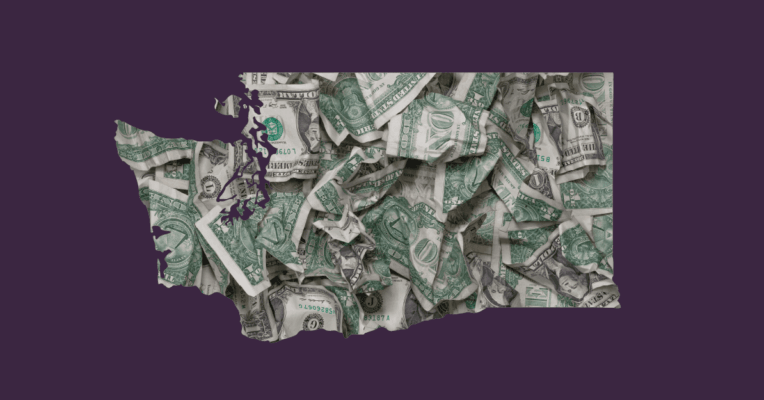When It Comes to Your Investment Portfolio, Mow Your Grass
There are many variables that affect your investment portfolio, some which you can control and others which you cannot.
Do you think there’s a spot for you in the offense? How do you plan to compete against the veteran? Do the coaches think we can compete this season?
These questions are asked in every NFL locker room, week in and week out, in season and off. The intent is for the reporter to get a story on how you will compete against the other players vying for a job. My perspective changed when I saw a wise veteran throw his hands up in resignation and declare: “All I can do is mow my grass.”
The statement was the veteran’s battle cry. It meant that he wasn’t going to waste any time on things outside of his control; that his complete focus would be on making sure his own backyard was the best it could be. He would manage what he did control and not try and find success in his neighbor’s yard.
Building out an investment portfolio requires a similar mindset. When faced with market volatility or even a single stock movement, ask yourself, “What is in my control?”
Mow your grass by focusing on three factors you do control in your portfolio:
- Why are you paying so many fees?
- Where have you invested your portfolio?
- What tax bracket are you in?
Why are you paying so many fees?
The reason you pay fees in your investment portfolio is because you expect to outperform the market at large. However, with information widely available to the public, it’s becoming harder and harder to consistently predict where investment returns will come. Today, there are many funds available that will return a similar percentage and yet charge different fees.
Mow your grass by managing the internal expense ratio of your investment portfolio. If you can reduce the internal expenses by even 50 basis points, then you will have built in an automatic 0.5% return. This may seem insignificant, but it can amount to $50,000 over just 10 years in a million-dollar portfolio.
When faced with market volatility or even a single stock movement, ask yourself, “What is in my control?”
Front-load fees are expenses charged just to enter the fund. This would be like paying to get into a hot new nightclub, then realizing you could have had just as much fun at the free bar across the street. Paying load expenses puts more pressure on your performance because now you must beat the market by the expense ratio plus the front-load fee.
Mow your grass by seeking out a similar product that does not have a load fee.
Where have you invested your portfolio?
Build efficiency into your investment portfolio by understanding what vehicle you are using to invest. Maximize that efficiency by choosing which type of investments you place in each vehicle. Liquidity is key when constructing an investment portfolio and being limited to your money by account or by sector is a major disadvantage. Strategizing your portfolio location will provide liquidity and reduce trading costs.
Mow your grass by keeping liquidity in your portfolio. By constructing it to cover short-term cash needs, you will have more control over your investment time horizon.
What should go where? Now that you understand the need for liquidity, you see that your brokerage account is the most appropriate place to cover short-term needs. Tax inefficient investments, ones that kick off a lot of income, should be held in tax-deferred vehicles. Because you will not be taxed on the gains again, high-growth investments should be held in tax-efficient vehicles, such as 401(k), traditional IRA, Roth IRA, and H.S.A.
Mow your grass by placing the correct investment into the correct vehicle. This asset location can add up to 75 basis points in value.
What tax bracket are you in?
Did you know that there are different tax brackets connected to how long you have held an investment? When it comes to investing, one year is the magical number. This designation changes your income from “ordinary” to “capital gains” and can instantly lower the taxes you will pay on the investment gains.
Mow your grass by holding your investments for longer than a year and paying less in taxes. This strategy can save an investor in the 35 percent marginal tax bracket 20 percent of their investment return!
By constructing your portfolio to cover short-term cash needs, you will have more control over your investment time horizon.
Can you control if the market has a pullback? No. But you can control how you manage a pullback. Did you use the pullback to reduce your future tax liability by harvesting the loss? Tax loss harvesting is when the market pulls back, and you sell a current holding at a loss, thus creating a taxable event in the process. This taxable event is a loss of capital and can be carried forward to the next time you have a gain on capital to offset any tax you owe.
Mow your grass by turning a negative into a positive and harvesting a taxable loss. Rebalancing your investment portfolio can add value up to 35 basis points.
Regardless if you are competing for playing time or investment returns, the message is clear: mow your grass. As the saying goes, “Life is not always about what you see, but what you focus on that counts.”
Are you still staring into your neighbor’s backyard looking for success, or is it time to take out the lawn mower and tend to your own yard?
Read more from our blog:
- Coaching and Investing Mindsets: What’s the Winning Formula?
- Trying to Get Ahead of the Next Downturn? Official Recession Announcements Won’t Help
- What to Expect When You’re Expecting Returns, Part I
- Buyer Beware: The Allure vs. Reality of Active Management
- Worried About a Market Downturn? These 3 Yoga Principles Can Help





